
It’s Sunday, the traditional day of rest, so let’s have some Tudor history fun with a crossword puzzle testing your knowledge of how the Tudors celebrated Christmas.
[Read More...]
It’s Sunday, the traditional day of rest, so let’s have some Tudor history fun with a crossword puzzle testing your knowledge of how the Tudors celebrated Christmas.
[Read More...]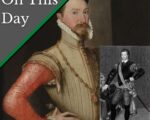
On this day in history, 11th December 1608, Lady Douglas Sheffield was buried at St Margaret’s Church, Westminster.
Douglas Sheffield (née Howard)had served as one of Queen Elizabeth I’s ladies and she’d been Robert Dudley, Earl of Leicester’s lover at one point, even having a son by him. Lady Sheffield also claimed to be Leicester’s legal wife.
Find out more about Lady Douglas Sheffield…
[Read More...]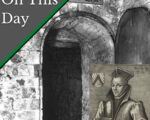
On this day in Tudor history, 10th December 1591, in the reign of Queen Elizabeth I, Edmund Gennings and Swithin Wells were executed on a scaffold set up outside Wells’ house at Holborn.
Gennings, a Roman Catholic priest, had been celebrating mass at Wells’ home when the famous Elizabethan priestfinder and torturer, Richard Topcliffe, found them. Topcliffe had Gennings thrown into the Little Ease.
Find out more about St Edmund Gennings and St Swithin Wells, and their sad ends…
[Read More...]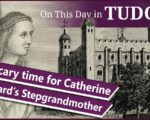
On this day in Tudor history, 9th December 1541, in the reign of King Henry VIII, Catherine Howard’s stepgrandmother, Agnes Tilney, Dowager Duchess of Norfolk was questioned.
The sixty-four-year-old dowager duchess had been detained at the Lord Chancellor’s home and on 9th December, she was questioned regarding the location of her money and jewels.
Find out about why she was detained and questioned, why she ended up in the Tower, and what happened when the dowager duchess was indicted for misprision of treason…
[Read More...]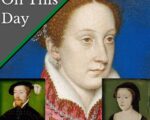
On this day in Tudor history, 8th December 1542, Marie de Guise, second wife of King James V of Scotland, gave birth to a healthy baby girl at Linlithgow Palace in Scotland. The little girl was baptised Mary and when she was just six days old, she became Queen of Scotland and is known as Mary Stuart (Stewart) or Mary, Queen of Scots.
Find out about the life of Mary, Queen of Scots, including her three marriages, abdication, imprisonment and downfall…
[Read More...]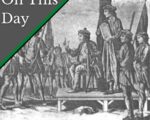
On this day in Tudor history, 7th December 1549, in the reign of King Edward VI, Robert Kett, the former leader of Kett’s Rebellion, was executed.
The rebel leader was hanged from the walls of Norwich Castle after being found guilty of treason. His brother William was hanged the same day, but from the steeple of Wymondham Church.
You can find out all about Robert Kett and his rebellion in this video:
[Read More...]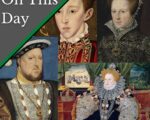
On this day in Tudor history, 6th December 1573, in the reign of Queen Elizabeth I, Sir Hugh Paulet died at his home in Hinton St George in Somerset.
Paulet distinguished himself as a soldier in Henry VIII’s reign, and in Edward VI’s reign he served as Governor of Jersey. Although he was a Protestant, he served as Vice-President of the Welsh Marches in Mary I’s reign, and went on to have a successful career in Elizabeth I’s reign.
Paulet was an important man and a royal servant, but still managed to die a natural death at his home.
Find out more about Sir Hugh Paulet…
[Read More...]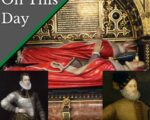
On this day in Tudor history, 5th December 1556, in the reign of Queen Mary I, Anne de Vere (née Cecil) was born.
Anne was the daughter of William Cecil, 1st Baron Burghley, and his second wife, Mildred Cooke.
Anne had a relatively short life, dying at just 31 years of age, but she was respected and liked by scholars, had five children, and had a sadly unhappy marriage with Edward de Vere, Earl of Oxford.
Oxford did not treat his wife well and even refused to recognise their first daughter as his own, at one point. If only she had married poet Philip Sidney instead!
Find out more about the life of Anne de Vere, Countess of Oxford…
[Read More...]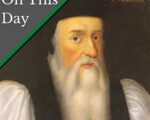
On this day in Tudor history, 4th December 1555, in the reign of Queen Mary I, papal sentence was passed in Rome on Thomas Cranmer, who had served as Archbishop of Canterbury in the reigns of King Henry VIII and King Edward VI.
The papal sentence deprived Cranmer of his archbishopric and gave permission for his fate to be decided by the secular authorities.
Let me explain what led Cranmer to this day and also what happened next…
[Read More...]
As today is the anniversary of Elizabeth I agreeing to sentence Mary, Queen of Scots, to death, I thought I’d share this video recorded by Emma Casson, who was 19 at the time, and who was studying journalism in the Netherlands. Emma shows us some of the parts of Edinburgh that Mary would have known.
[Read More...]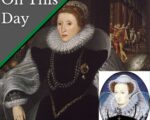
On this day in Tudor history, 2nd December 1586, Queen Elizabeth I finally agreed to sentence Mary, Queen of Scots, to death.
The Houses of Lords and Commons had jointly petitioned the queen to issue a public proclamation of sentence against Mary, that sentence being death.
Mary, Queen of Scots, had been found guilty of high treason in October 1586, but Elizabeth I had stalled in doing anything about it. She did not want to commit regicide. Parliament, however, believed that if Mary was not dealt with, she would continue to plot against Elizabeth and would utterly “ruinate and overthrow the happy State and Common Weal of this most Noble Realm”.
Find out what Parliament said and what happened next…
[Read More...]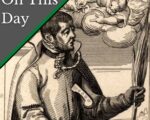
On this day in Tudor history, 1st December 1581, in the reign of Queen Elizabeth I, Alexander Briant was hanged, drawn and quartered at Tyburn, along with Ralph Sherwin and Edmund Campion.
The twenty-five-year-old Roman Catholic priest had been imprisoned, and had suffered being starved, racked and tortured in other awful ways, but claimed that he felt no pain due to God’s help. He also refused to give his interrogators the information they wanted. Briant was tried for treason and suffered a full traitor’s death.
[Read More...]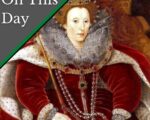
On this day in Tudor history, 30th November 1601, Queen Elizabeth I gave her famous Golden Speech.
She addressed it to the House of Commons, and it was her final speech to Parliament.
In her speech, the sixty-eight-year-old Elizabeth I spoke of her position as queen and her love and respect for her realm, her people, and for her members of Parliament. It was a speech that brought many of the men present to tears. It was a heartfelt speech by a queen who truly loved her people.
Let me share Elizabeth I’s Golden Speech with you…
[Read More...]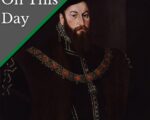
On this day in Tudor history, 29th November 1528, in the reign of King Henry VIII, Anthony Browne, 1st Viscount Montagu, was born.
Montagu began his court career with the help of his father in Henry VIII’s reign. He was made a Knight of the Bath when Edward VI became king, served as a privy councillor in Queen Mary I’s reign and died a natural death in Queen Elizabeth I’s reign. Montagu even survived being implicated in a rebellion!
Who was Anthony Browne, 1st Viscount Montagu, and just how did he manage to not only have an excellent court career, but leave a fortune to his grandson, when he was a Catholic in Elizabeth I’s reign?
[Read More...]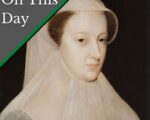
On this day in Tudor history, 28th November 1565, Francis Yaxley set sail for Scotland from Antwerp.
The member of Parliament and political agent was carrying gold to Scotland for Mary, Queen of Scots. However, his ship was wrecked in a storm and he never reached Scotland, and neither did the gold.
But why was Francis Yaxley carrying gold? Who was it from and what happened to it?
[Read More...]
On this day in Tudor history, 27th November 1582, in the reign of Queen Elizabeth I, the famous playwright William Shakespeare married Anne (also known as Agnes) Hathaway at Temple Grafton, near Stratford-upon-Avon, in Warwickshire.
Shakespeare was eighteen years old when he married his twenty-six-year-old bride, who was pregnant at the time of their marriage. Anne gave birth to a daughter, Susannah, the following May. The couple went on to have twins, Hamnet and Judith, in 1585.
Find out more about William Shakespeare and Anne Hathaway, and their marriage, and also what happened to them…
[Read More...]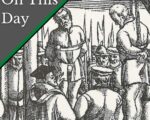
On this day in Tudor history, 26th November 1585, in the reign of Queen Elizabeth I, Catholic priest Hugh Taylor and his friend Marmaduke Bowes were hanged at York.
Taylor and Bowes were the first Catholics executed under the new law. Elizabeth I’s 1585 statute made it treason to be a Jesuit or seminary priest in England or to harbour such a priest.
In 1987, Pope John Paul II beatified Taylor and Bowes as two of the 85 Martyrs of England, Scotland and Wales.
Find out more about these men and what this 1585 legislation was all about…
[Read More...]
It’s Friday, so time to share a Tudor history goody from our archives. This week, we have this wonderful talk from Natalie Grueninger, author of the forthcoming book “The Final Year of Anne Boleyn”. Natalie’s talk is on Anne Boleyn’s early life…
[Read More...]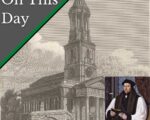
On this day in Tudor history, 25th November 1545, in the reign of King Henry VIII, Sir Thomas Legh (Leigh) died.
Sir Thomas Legh was a lawyer, member of Parliament, diplomat, ecclesiastical administrator and a faithful servant to Henry VIII. However, his work for the king during the dissolution of the monasteries led to complaints against him and even rebellion.
Legh was a vicious man known for his harsh treatment of monks, but he helped to protect Thomas Cranmer, Archbishop of Canterbury, in 1543 when the archbishop’s enemies tried to bring him down.
Here are some facts about Sir Thomas Legh…
[Read More...]
On this day in Tudor history, 24th November 1572, John Knox died at his home in Edinburgh.
The Scottish clergyman, famous Reformer, royal chaplain, and founder of Presbyterianism had a peaceful end, dying as his second wife, Margaret, read aloud from Paul’s First Letter to the Corinthians.
John Knox is known for bringing the Protestant reformation to the church in Scotland and for his controversial views about women rulers. Knox was also chaplain to King Edward VI and had a very eventful life, being taken prisoner by the French and being forced into service on the galleys of their fleet at one point.
Find out more about John Knox, his life and career…
[Read More...]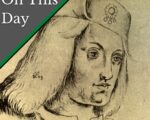
On this day in Tudor history, 23rd November 1499, in the reign of King Henry VII, Perkin Warbeck was hanged at Tyburn.
Warbeck was executed for allegedly plotting to help another claimant, Edward, Earl of Warwick, escape from the Tower of London.
Perkin Warbeck had been imprisoned in 1497 after he had raised a rebellion claiming to be Richard of Shrewsbury, Duke of York, the younger of the Princes in the Tower. He had even been proclaimed King Richard IV, but his rebellion and claim had failed.
Let me tell you about Perkin Warbeck’s background, explain how he ended up trying to claim the throne of England, and tell you what happened.
[Read More...]
On this day in Tudor history, 22nd November 1594, in the reign of Queen Elizabeth I, Tudor explorer Sir Martin Frobisher died at Plymouth.
The naval commander, privateer and explorer died of gangrene after having been shot in the thigh during hand-to-hand combat during a siege.
Sir Martin Frobisher is famous for the three voyages he undertook in search of the Northwest Passage. He was knighted for his naval service during the 1588 Spanish Armada.
Find out all about the life and career of Sir Martin Frobisher…
[Read More...]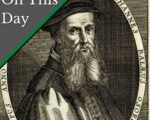
On this day in Tudor history, 21st November 1495, John Bale was born in Suffolk.
John Bale was a churchman, Protestant playwright, historian and Bishop of Ossory. He wrote twenty-four plays and “Illustrium majoris Britanniae scriptorum, hoc est, Angliae, Cambriae, ac Scotiae Summarium…”, a book on famous British writers, which is his most well-known work. His work on Protestant martyrs was also used by the famous martyrologist John Foxe.
John Bale spent a fair amount of time in exile due to his faith, and he also courted controversy with his attacks on Catholics.
Find out all about this accomplished Tudor man…
[Read More...]
On this day in history, 20th November 1612, in the reign of King James I, Sir John Harington died.
Harington was a courtier and author, and also the late Queen Elizabeth I’s godson.
In Elizabeth I’s reign, he had invented the Ajax, or “jakes”, England’s first flush toilet.
Find out more about Sir John Harington and his invention…
[Read More...]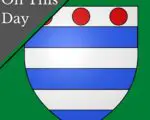
On this day in Tudor history, 19th November 1564, in the reign of Queen Elizabeth I, Lord John Grey died.
He’s not the Lord John Grey of the wonderful Outlander series, but he is just as interesting.
Lord John Grey was the youngest son of Thomas Grey, 2nd Marquess of Dorset, and in Queen Mary I’s reign, he was involved in a rebellion with his brothers, Lord Thomas Grey and Henry Grey, Duke of Suffolk. Henry and Thomas were executed, but John wasn’t.
How did Lord John Grey escape execution? And why did he get into trouble again in Elizabeth I’s reign?
Let me tell you all about Lord John Grey…
[Read More...]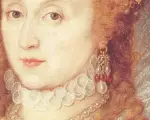
On Fridays, I often share resources from our Tudor Society archives and today is a talk on ear piercing in Tudor times.
I did the talk back in 2017 and in it, I look at when ear piercing became fashionable in the Tudor period, the evidence we have on it, and also ear piercing in men.
[Read More...]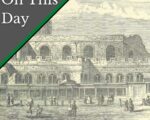
On this day in Tudor history, 18th November 1559, in the reign of Queen Elizabeth I, Ralph Baynes (Baines), Bishop of Coventry and Lichfield, died.
Baynes had started his career in Henry VIII’s reign and in Mary I’s reign, he had been actively involved in the persecutions of Protestants, examining many well-known martyrs and featuring in John Foxe’s “Book of Martyrs”. He came to a sad end, dying while imprisoned in the home of Edmund Grindal, Bishop of London.
Find out more about Ralph Baynes, his life and career, and how he came to be deprived of his bishopric and die in confinement…
[Read More...]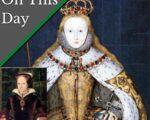
On this day in Tudor history, 17th November 1558, Queen Mary I died at St James’s Palace in London.
The forty-two-year-old daughter of King Henry VIII and Catherine of Aragon passed the throne on to her twenty-five-year-old half-sister, Elizabeth, who became Queen Elizabeth I.
Let me tell you about the accession of Queen Elizabeth I and the traditional story of Elizabeth finding out that she was queen at Hatfield…
[Read More...]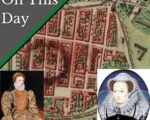
On this day in Tudor history, 16th November 1601, Charles Neville, 6th Earl of Westmorland, died in Nieuwpoort in Flanders.
The nobleman and rebel had fled into exile following the failure of the Northern Rebellion, also known as the Rising of the North or the Revolt of the Northern Earls, a plot to release Mary, Queen of Scots, from prison and to overthrow Elizabeth I.
Unfortunately, Westmorland didn’t learn his lesson and was involved in a further plot. He died in debt and separated from his wife and daughters.
Find out more about Charles Neville, 6th Earl of Westmorland…
[Read More...]